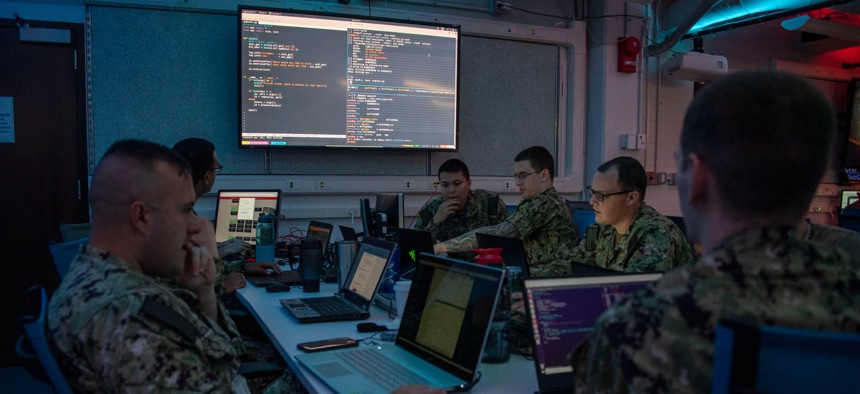Navy CIO touts NGEN's promise

U.S. Navy photo by Mass Communication Specialist 2nd Class William Sykes
Aaron Weis, the Navy's chief information officer, said the Navy is looking at "fundamental" architecture changes to make its network more agile and secure.
If done right, the Navy won't be able to recognize its enterprise IT network in the next year or so, according to a top tech official.
Aaron Weis, the Navy's chief information officer, said the Navy's ongoing modernization efforts to make the network more nimble, particularly via the Next Generation Enterprise Network contract, means fundamental changes to the architecture.
"We are modernizing the Navy's network. We are pulling it into the third decade of the 20th century. And there are multiple tracks to this," Weis said, citing the shift to Microsoft Office 365 via the Flank Speed initiative as one prong to the strategy during a panel discussion April 5 at the Navy League's annual Sea Air Space conference in National Harbor, Md.
Weis told FCW following the panel that architecture down to the transport layer was "fundamentally changing across the board and it's changing to flatten the network, make the network more maneuverable."
To do that, the Navy is relying on software-defined networking to better defend and operate the network, while also sustaining "enterprise service methodology," he said.
Those efforts are happening in conjunction with the Navy-Marine Corps Intranet (NMCI)-NGEN program and cross cuts a lot of the cloud capabilities, the Navy CIO said during the panel, "so I think that the NGEN that you'll see in another six to 12 to 18 months is going to be fundamentally different."
The Navy awarded Leidos the $7.7 billion ceiling NGEN services contract in 2020 and HP the multibillion-dollar hardware contract the year before. NGEN encompasses three distinct infrastructures: NMCI, the Navy's continental U.S. network, the Marine Corps' Enterprise Network, and the overseas network called ONE-Net. But modernization efforts are currently focused on NMCI.
DJ LeGoff, vice president and NGEN program manager for Leidos, told FCW that as part of its contract the Navy asked them to develop a transformation process that would help identify high-priority initiatives to achieve broader Navy's goals, such as better user experience, improved access to services, cloud capability, and upgrading legacy infrastructure.
"One of the requirements that the Navy levied on the NGEN contract is to develop and work with the Navy on a transformation modernization process, whose end state goal is to take the legacy aging infrastructure that exists today, and move it to a more modern, agile, scalable and defendable network that Mr. Weis and the Navy have envisioned," LeGoff said.
Meanwhile, the Navy has been shifting to an enterprise IT-as-a-service model as part of its Information Superiority Vision and having a network that can support it is key to that mission.
"We're working to stand up a portfolio of enterprise services that organizations can use instead of having to build, so it's sort of build once use many," Weis told FCW.
"And so the network architecture will support that and an enterprise service approach. And then sort of layered on top of that is the cloud-delivered capability that's coming across the core -- the first element of which is really flexibility."






